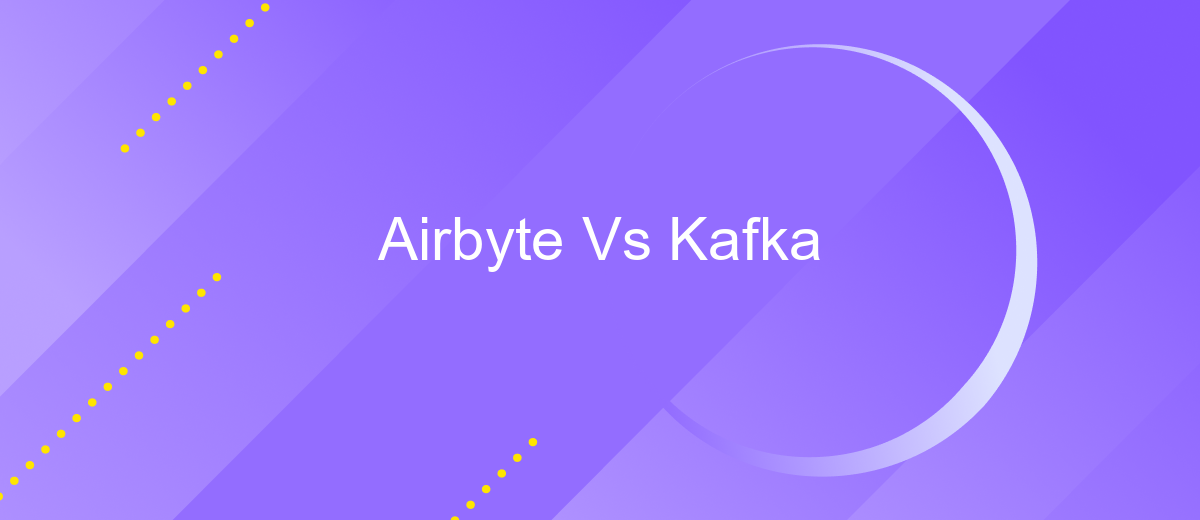Airbyte Vs Kafka
In the rapidly evolving landscape of data integration and streaming, Airbyte and Kafka stand out as powerful tools tailored to different needs. Airbyte offers a flexible, open-source solution for data ingestion, while Kafka excels in real-time data streaming and event-driven architectures. This article delves into their core functionalities, strengths, and ideal use cases to help you make an informed choice.
Introduction
When it comes to data integration and real-time data streaming, two prominent tools often come into discussion: Airbyte and Kafka. Both platforms offer unique features and capabilities, making them suitable for different use cases. Understanding the strengths and limitations of each can help businesses make informed decisions about which tool best fits their needs.
- Airbyte: An open-source data integration platform that allows users to sync data from various sources to data warehouses and databases.
- Kafka: A distributed streaming platform designed to handle real-time data feeds with high throughput and low latency.
- ApiX-Drive: A service that simplifies the integration process between various applications, including Airbyte and Kafka, without requiring coding skills.
Choosing between Airbyte and Kafka depends on the specific requirements of your project. If your goal is to integrate multiple data sources into a central repository, Airbyte might be the better choice. On the other hand, if you need to process and analyze data in real-time, Kafka is more suitable. Additionally, tools like ApiX-Drive can further streamline the integration process, making it easier to connect and manage your data flows.
Architectural Overview

Airbyte and Kafka are distinct in their architectural designs, each catering to different data integration needs. Airbyte is an open-source data integration platform that focuses on simplifying the process of connecting various data sources and destinations. It uses a modular approach, allowing users to create custom connectors with ease. Airbyte's architecture is built around the concept of connectors, which can be easily configured and managed through its intuitive user interface. This flexibility makes it ideal for organizations looking to streamline their ETL processes without extensive coding.
On the other hand, Kafka is a distributed streaming platform designed for building real-time data pipelines and streaming applications. Its architecture is based on a distributed commit log, enabling high-throughput and fault-tolerant data streaming. Kafka's core components include producers, consumers, and brokers, which work together to ensure reliable data transmission. For businesses needing seamless integration with various services, tools like ApiX-Drive can be instrumental. ApiX-Drive offers automated integration capabilities, allowing users to connect Kafka with other platforms effortlessly, enhancing the overall data flow and operational efficiency.
Key Features and Capabilities

When comparing Airbyte and Kafka, it's essential to understand their key features and capabilities. Both platforms offer robust solutions for data integration and streaming, but they cater to different use cases and operational requirements.
- Data Integration: Airbyte excels in simplifying data integration with its extensive range of pre-built connectors, making it easy to connect various data sources. Kafka, on the other hand, is a powerful event streaming platform designed for real-time data processing.
- Scalability: Kafka is renowned for its high scalability, capable of handling massive data streams with low latency. Airbyte, while scalable, focuses more on ease of use and flexibility in connecting disparate data sources.
- Customization: Airbyte allows for significant customization through its open-source nature, enabling users to create custom connectors. Kafka provides robust APIs for developers to build custom data pipelines and integrations.
- Integration Services: Platforms like ApiX-Drive can further enhance Airbyte's capabilities by automating and streamlining the integration process, making it easier to manage data flows between different systems.
In summary, Airbyte is ideal for organizations looking for a straightforward, flexible solution for data integration, while Kafka is better suited for those needing a high-performance, real-time data streaming platform. Both have their unique strengths, and the choice depends on the specific requirements of your data infrastructure.
Use Cases and Applications

When comparing Airbyte and Kafka, it's essential to understand their distinct use cases and applications. Airbyte is primarily used for data integration, allowing businesses to seamlessly connect various data sources and destinations. This makes it ideal for ETL (Extract, Transform, Load) processes, where data needs to be moved and transformed across different systems.
On the other hand, Kafka excels in real-time data streaming and event-driven architectures. It's widely used for building scalable and fault-tolerant data pipelines, enabling real-time analytics and monitoring. Kafka is particularly beneficial for applications that require high throughput and low latency, such as financial trading platforms and IoT data processing.
- Airbyte: ETL processes, data warehousing, and integration with various SaaS applications.
- Kafka: Real-time data streaming, event-driven architectures, and large-scale data pipelines.
For businesses looking to streamline their data integration processes, services like ApiX-Drive can be incredibly useful. ApiX-Drive offers a simple and efficient way to set up integrations between different applications without the need for extensive coding, making it a valuable tool for both Airbyte and Kafka users.
Conclusion
In conclusion, both Airbyte and Kafka offer unique advantages depending on the specific needs of your data integration and streaming requirements. Airbyte excels in its ease of use, rapid deployment, and extensive pre-built connectors, making it an excellent choice for organizations looking to quickly set up data pipelines without extensive coding. On the other hand, Kafka's robust performance, scalability, and real-time data processing capabilities make it ideal for enterprises that require high-throughput and low-latency data streaming solutions.
For those seeking to simplify their integration processes further, tools like ApiX-Drive can be invaluable. ApiX-Drive allows for seamless integration between various applications and services, reducing the complexity of managing multiple data sources. By leveraging such tools, businesses can maximize the efficiency and reliability of their data workflows, regardless of whether they choose Airbyte or Kafka as their primary solution.
- Automate the work of an online store or landing
- Empower through integration
- Don't spend money on programmers and integrators
- Save time by automating routine tasks
FAQ
What are the primary use cases for Airbyte and Kafka?
How do Airbyte and Kafka handle data transformation?
Can Airbyte and Kafka be used together?
Which tool is easier to set up for a small team with limited resources?
What are some automation tools that can help with setting up and managing data integrations?
Strive to take your business to the next level, achieve your goals faster and more efficiently? Apix-Drive is your reliable assistant for these tasks. An online service and application connector will help you automate key business processes and get rid of the routine. You and your employees will free up time for important core tasks. Try Apix-Drive features for free to see the effectiveness of the online connector for yourself.


